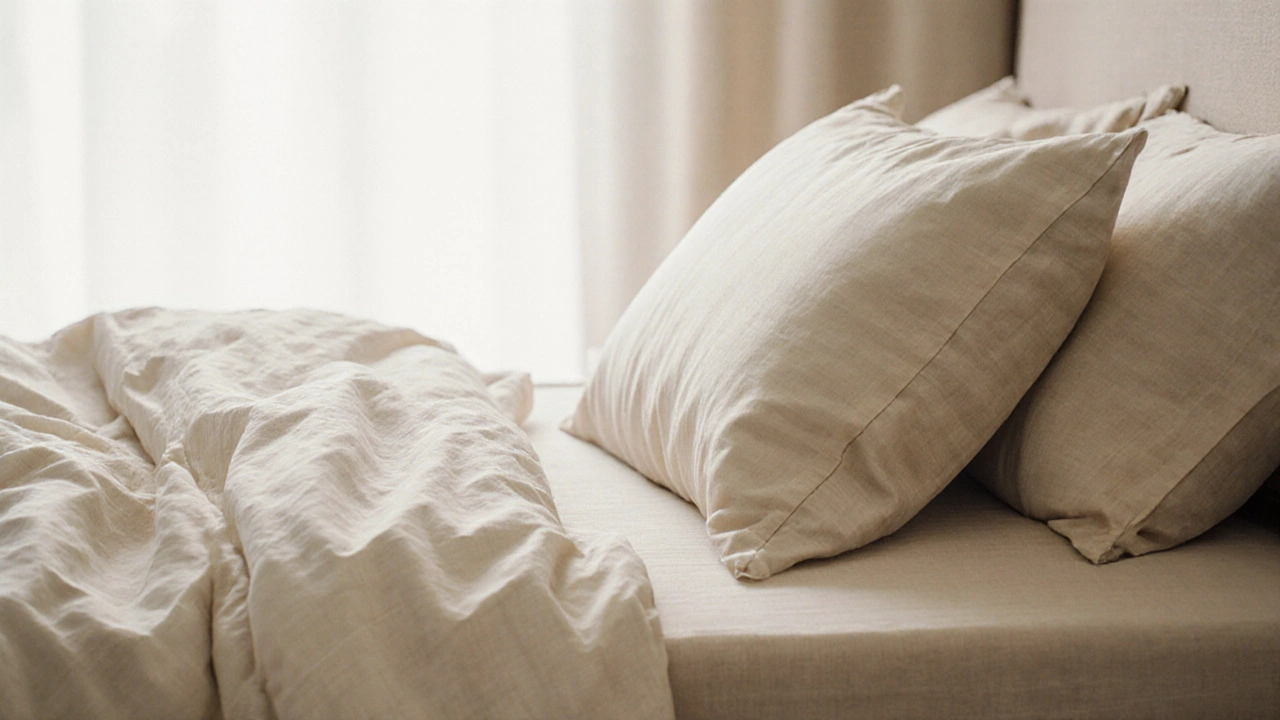When we talk about bedding quality, the durability, comfort, and materials that determine how well your sleep setup performs over time. It's not just about thread count—it's about how long your sheets hold up, whether your pillow still supports your neck after a year, and if your mattress is still giving you restful nights. Many people think expensive bedding means better sleep, but that’s not always true. What really matters is how the materials are made, how they’re used, and how well they match your body’s needs.
Mattress lifespan, how long a mattress stays supportive and comfortable before it starts sagging or losing shape. Most quality mattresses last 7 to 10 years, but if you wake up with back pain or notice deep body impressions, it’s time to replace it. Your sheet material, the fabric used in bed sheets—like cotton, linen, bamboo, or microfiber—that affects breathability, softness, and durability. Long-lasting sheets aren’t the shiniest ones on the shelf—they’re the ones made from long-staple cotton or organic fibers that don’t pill or thin out after a few washes. And then there’s pillow types, the different kinds of pillows—memory foam, down, latex, or hybrid—that offer varying levels of support for side, back, or stomach sleepers. A good pillow doesn’t flatten out after a month. It keeps its shape, stays cool, and helps your spine stay aligned. You don’t need to buy the most expensive set. You just need to know what to look for.
Bedding quality isn’t something you figure out after buying five sets. It’s something you learn by paying attention to how your body feels when you wake up. Do you wake up sweaty? Your sheets might be trapping heat. Do your shoulders ache? Your pillow might be too high or too flat. Is your mattress uneven? It’s probably past its prime. These aren’t random complaints—they’re clues.
People who care about bedding quality don’t just replace things when they break. They replace them when they stop working. That’s why checking the weave of your sheets, feeling the firmness of your pillow, and testing your mattress every couple of years matters. It’s not about keeping up with trends. It’s about making sure you sleep well, night after night.
Below, you’ll find real advice from people who’ve tried the products, tracked their sleep, and figured out what actually lasts. No fluff. No marketing buzzwords. Just clear, practical insights on what makes bedding worth keeping—and what’s better off tossed.

Type 4 bedding is made from extra-long-staple cotton like Egyptian, Pima, or Supima. It's the softest, most durable option for sheets that get better with age. Learn how to spot real Type 4 and why it's worth the investment.
